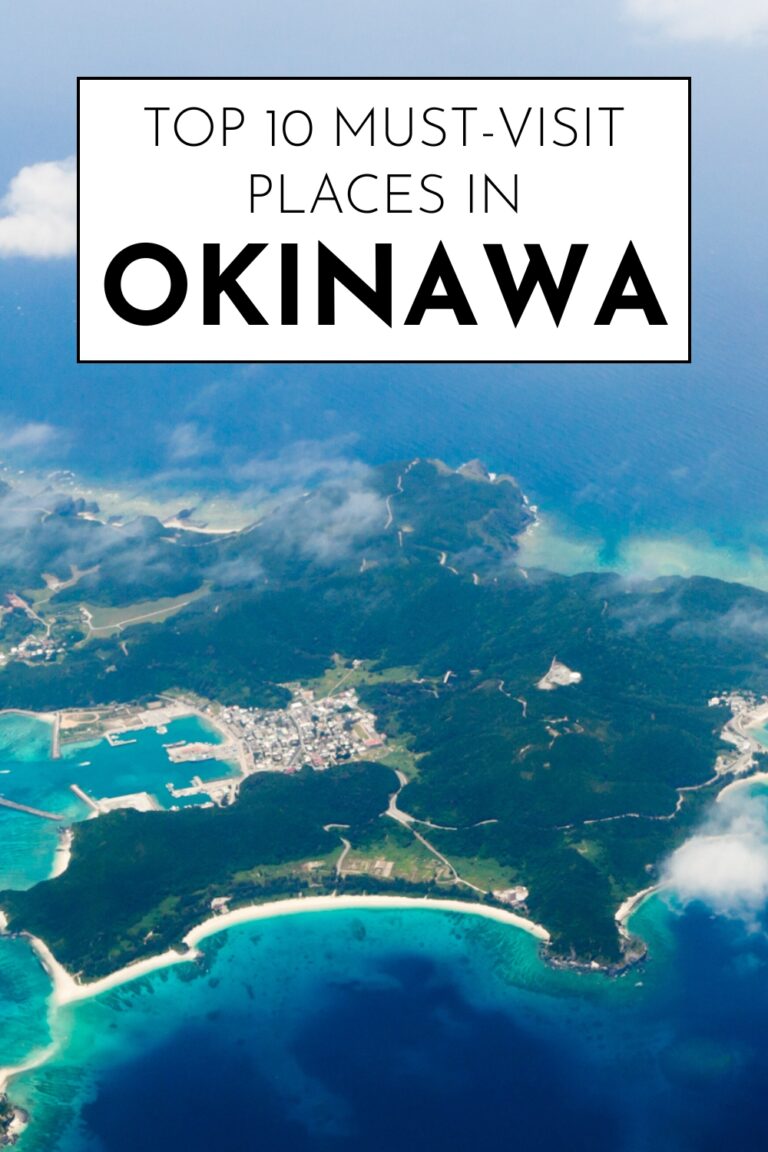Okinawa, Japan’s tropical paradise, offers a stunning blend of pristine beaches, rich cultural heritage, and unique experiences that set it apart from mainland Japan. This beautiful island chain in the East China Sea captivates visitors with its crystal-clear waters, ancient castles, vibrant coral reefs, and warm hospitality.
Known for its distinct Ryukyu culture, Okinawa presents a fascinating mix of Japanese traditions and influences from Southeast Asia and China. The islands boast some of the world’s most beautiful beaches, historic sites that tell stories of ancient kingdoms, and a laid-back atmosphere that makes every visitor feel at home.
From UNESCO World Heritage castle ruins to underwater wonderlands perfect for diving, Okinawa delivers unforgettable experiences for every type of traveler. Whether you’re seeking adventure, relaxation, cultural immersion, or natural beauty, these subtropical islands offer it all.
Let’s explore the ten most spectacular destinations that make Okinawa an essential stop for anyone visiting Japan.
1. Shuri Castle – Ancient Ryukyu Kingdom Capital

Shuri Castle stands as Okinawa’s most important historical site, representing the heart of the ancient Ryukyu Kingdom that ruled these islands for over 400 years. This magnificent castle complex showcases the unique architectural style that blends Japanese, Chinese, and Korean influences.
Historical Significance and Royal Heritage
Built in the 14th century, Shuri Castle served as the political and cultural center of the Ryukyu Kingdom until 1879. The castle’s distinctive red color and intricate decorations reflect the kingdom’s prosperity through maritime trade and diplomatic relations with China, Japan, and Southeast Asia.
The castle has been rebuilt multiple times throughout history, with the most recent reconstruction completed in 1992. Unfortunately, a fire in 2019 destroyed the main hall, but restoration efforts are underway to return this cultural treasure to its former glory.
The castle grounds include multiple gates, courtyards, and buildings that demonstrate the sophisticated culture of the Ryukyu Kingdom. Visitors can explore the remaining structures while learning about the unique history that shaped modern Okinawa.
Key highlights: Royal palace architecture, Ryukyu cultural exhibits, panoramic city views Best time to visit: Early morning or late afternoon for comfortable temperatures Entry fee: 400 yen for adults UNESCO status: World Heritage Site (Castle ruins)
2. Kokusai Street – Vibrant Cultural Hub
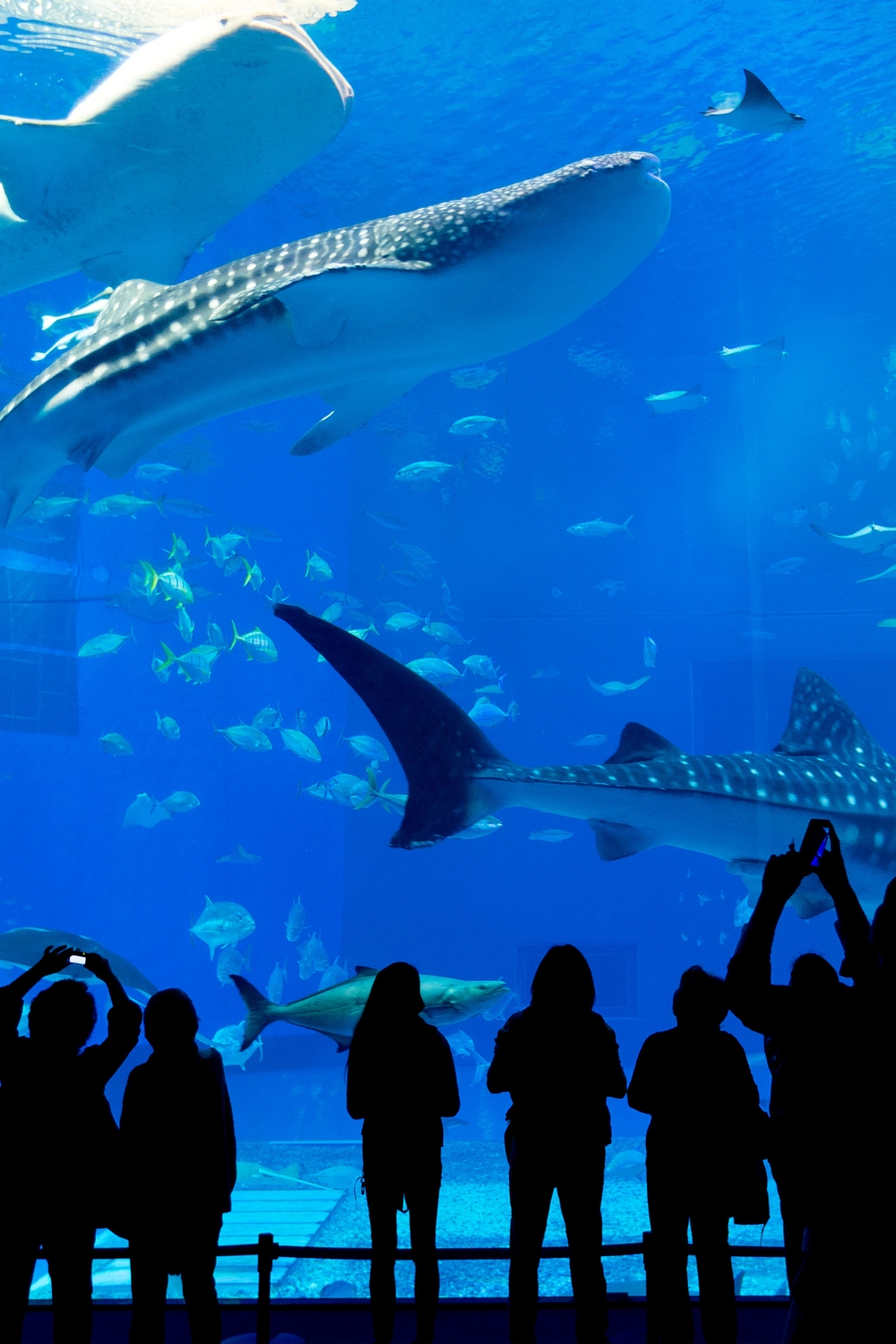
Kokusai Street (International Street) pulses with energy as Naha’s main entertainment and shopping district. This 1.6-kilometer pedestrian-friendly street offers the perfect introduction to modern Okinawan culture, cuisine, and crafts.
Shopping and Souvenir Paradise
The street bustles with shops selling everything from traditional Ryukyu textiles to modern Japanese goods. Local artisans display their crafts, including beautiful pottery, textiles, and the famous Okinawan shisa (lion-dog) statues that protect homes from evil spirits.
Traditional markets branch off from the main street, including the covered Makishi Public Market where you can sample fresh seafood and local produce. These side streets reveal hidden gems and authentic local experiences away from the main tourist flow.
Culinary Adventures and Nightlife
Kokusai Street serves as Okinawa’s food paradise, with restaurants offering everything from traditional Okinawan cuisine to international dishes. Don’t miss trying goya champuru (bitter melon stir-fry), Okinawan soki soba (pork rib noodles), and the famous Orion beer.
Evening transforms the street into a lively entertainment district with bars, live music venues, and cultural performances. The relaxed atmosphere encourages visitors to explore, taste, and experience authentic Okinawan hospitality.
Length: 1.6 kilometers Best for: Shopping, dining, nightlife, cultural experiences Operating hours: Most shops open 10 AM – 10 PM Transportation: Monorail to Kenchomae or Makishi stations
3. Churaumi Aquarium – Ocean Discovery Wonder
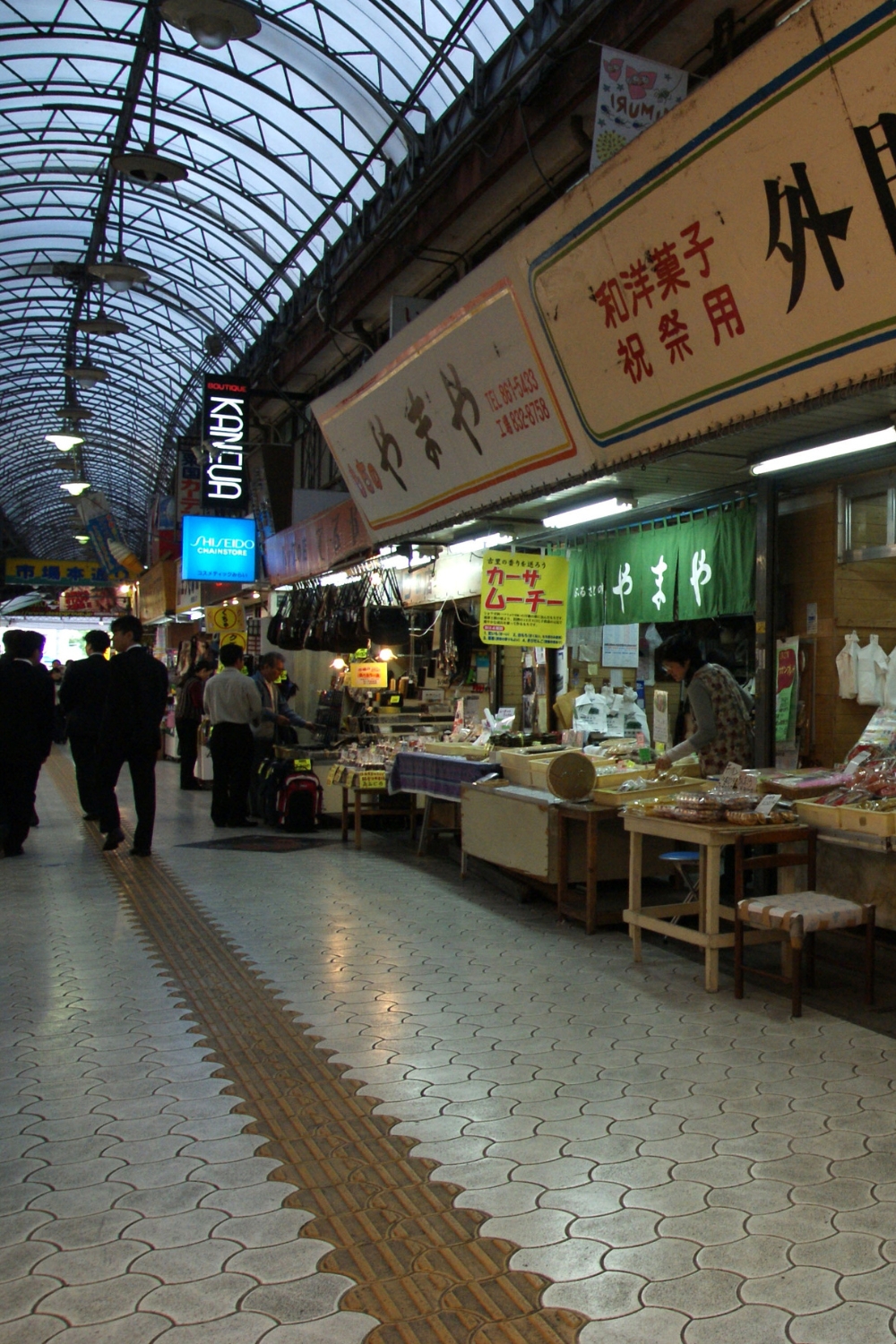
The Okinawa Churaumi Aquarium ranks among the world’s largest and most impressive aquariums, showcasing the incredible marine life that surrounds the Okinawan islands. Located in Ocean Expo Park, this aquarium offers unforgettable encounters with ocean giants and colorful tropical fish.
Kuroshio Sea Tank – Underwater Spectacle
The aquarium’s centerpiece is the massive Kuroshio Sea tank, one of the world’s largest aquarium tanks. This 7,500-cubic-meter tank houses whale sharks, manta rays, and hundreds of other species in a recreation of the Kuroshio Current ecosystem.
Standing before the tank’s 8.2-meter by 22.5-meter acrylic panel feels like diving into the ocean itself. The whale sharks, some reaching 8 meters in length, glide gracefully through the water alongside giant manta rays and schools of colorful fish.
Marine Life Diversity and Conservation
The aquarium houses over 740 species of marine life, from tiny seahorses to massive whale sharks. Interactive exhibits teach visitors about coral reef ecosystems, deep-sea creatures, and conservation efforts protecting Okinawa’s marine environment.
Special programs include feeding demonstrations, behind-the-scenes tours, and educational presentations about marine biology. The aquarium’s research facilities contribute to understanding and protecting ocean ecosystems throughout the region.
Main attraction: Kuroshio Sea tank with whale sharks Species count: Over 740 species Location: Ocean Expo Park, northern Okinawa Best time: Weekday mornings for smaller crowds
4. Ishigaki Island – Tropical Paradise Gateway
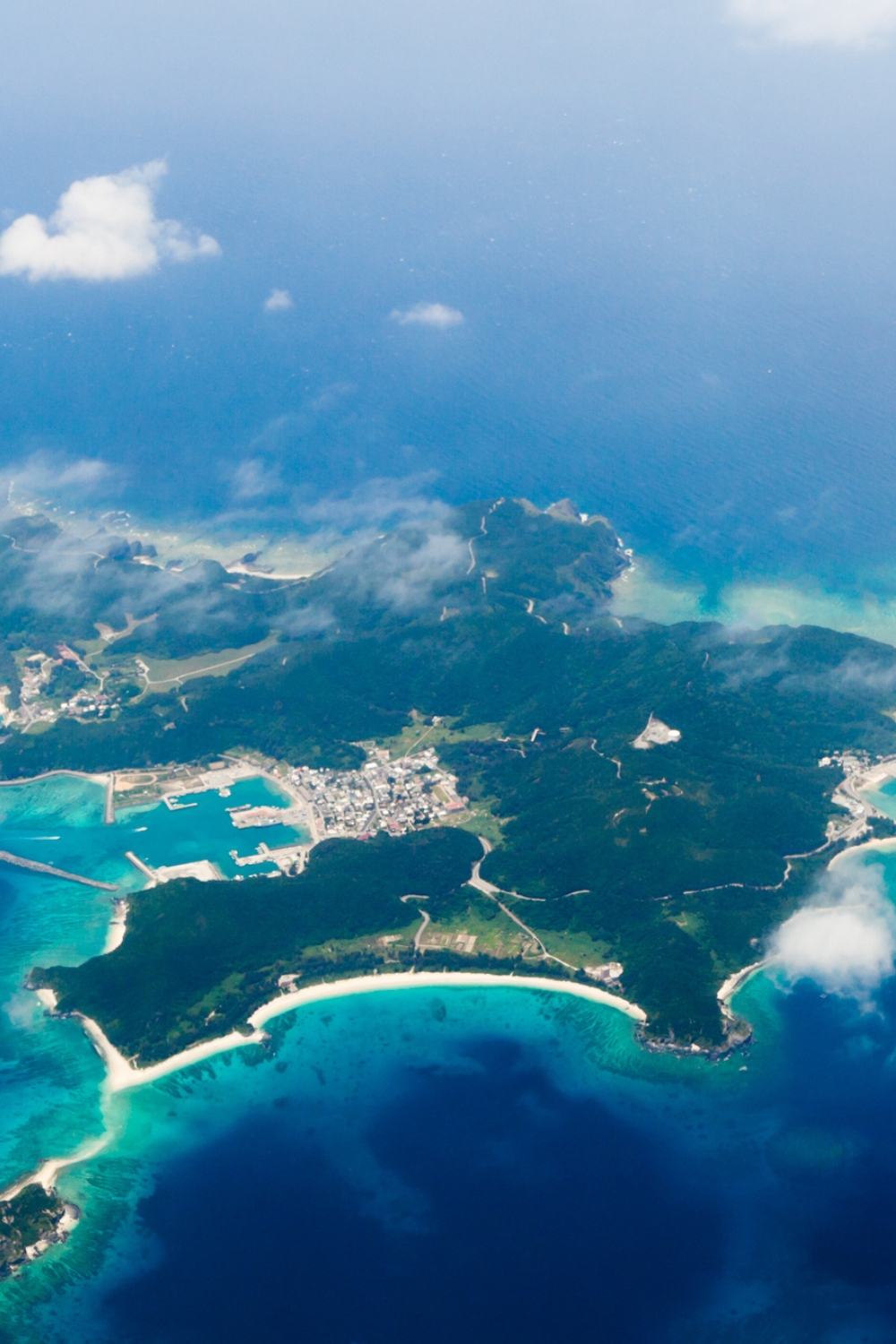
Ishigaki Island serves as the gateway to the Yaeyama Islands, offering some of Japan’s most beautiful beaches, excellent diving opportunities, and a relaxed island atmosphere. This southern island provides the perfect escape from busy urban life.
Beach Paradise and Water Activities
Ishigaki’s beaches rank among Japan’s finest, with powdery white sand and crystal-clear turquoise waters. Kabira Bay, the island’s most famous beach, offers stunning views and glass-bottom boat tours that reveal the colorful coral gardens below.
The island’s location in the subtropical zone means warm temperatures year-round, making it perfect for swimming, snorkeling, and diving. Multiple dive sites around the island showcase healthy coral reefs, tropical fish, and occasional encounters with sea turtles and rays.
Island Culture and Local Life
Ishigaki maintains a relaxed pace of life that reflects traditional Okinawan values. Local villages offer glimpses into island culture, with traditional festivals, local crafts, and authentic cuisine that differs from mainland Japanese food.
The island produces excellent pineapples, mangoes, and other tropical fruits. Local restaurants serve fresh seafood, Ishigaki beef, and traditional dishes that showcase the island’s agricultural and marine bounty.
Best beaches: Kabira Bay, Yonehara Beach, Sukuji Beach Activities: Snorkeling, diving, island hopping, beach relaxation Getting there: Flight from Naha or mainland Japan Best season: April to October for water activities
5. Okinawa World – Cultural Theme Park

Okinawa World offers a comprehensive introduction to Ryukyu culture, traditional crafts, and natural wonders all in one location. This cultural theme park combines education with entertainment, making it perfect for families and culture enthusiasts.
Gyokusendo Cave – Underground Natural Wonder
The park’s highlight is Gyokusendo Cave, one of Japan’s longest limestone caves. This 5-kilometer underground wonderland features over 300,000 stalactites and stalagmites formed over 300,000 years.
The illuminated cave tour takes visitors through chambers filled with incredible rock formations, underground pools, and natural sculptures. The cave maintains a constant temperature of 21°C, providing comfortable exploration regardless of outside weather.
Traditional Craft Demonstrations and Workshops
Okinawa World preserves traditional Ryukyu crafts through live demonstrations and hands-on workshops. Visitors can watch master craftsmen create pottery, textiles, glass, and traditional musical instruments using techniques passed down through generations.
Interactive workshops allow visitors to try their hand at pottery making, glass blowing, and textile weaving. These experiences provide deeper appreciation for the skill and artistry behind traditional Okinawan crafts.
Main attractions: Gyokusendo Cave, craft workshops, cultural performances Cave length: 890 meters (tourist route) Workshops: Pottery, glass, textiles, traditional instruments Location: Southern Okinawa, 30 minutes from Naha
6. Zamami Island – Diving and Whale Watching Paradise
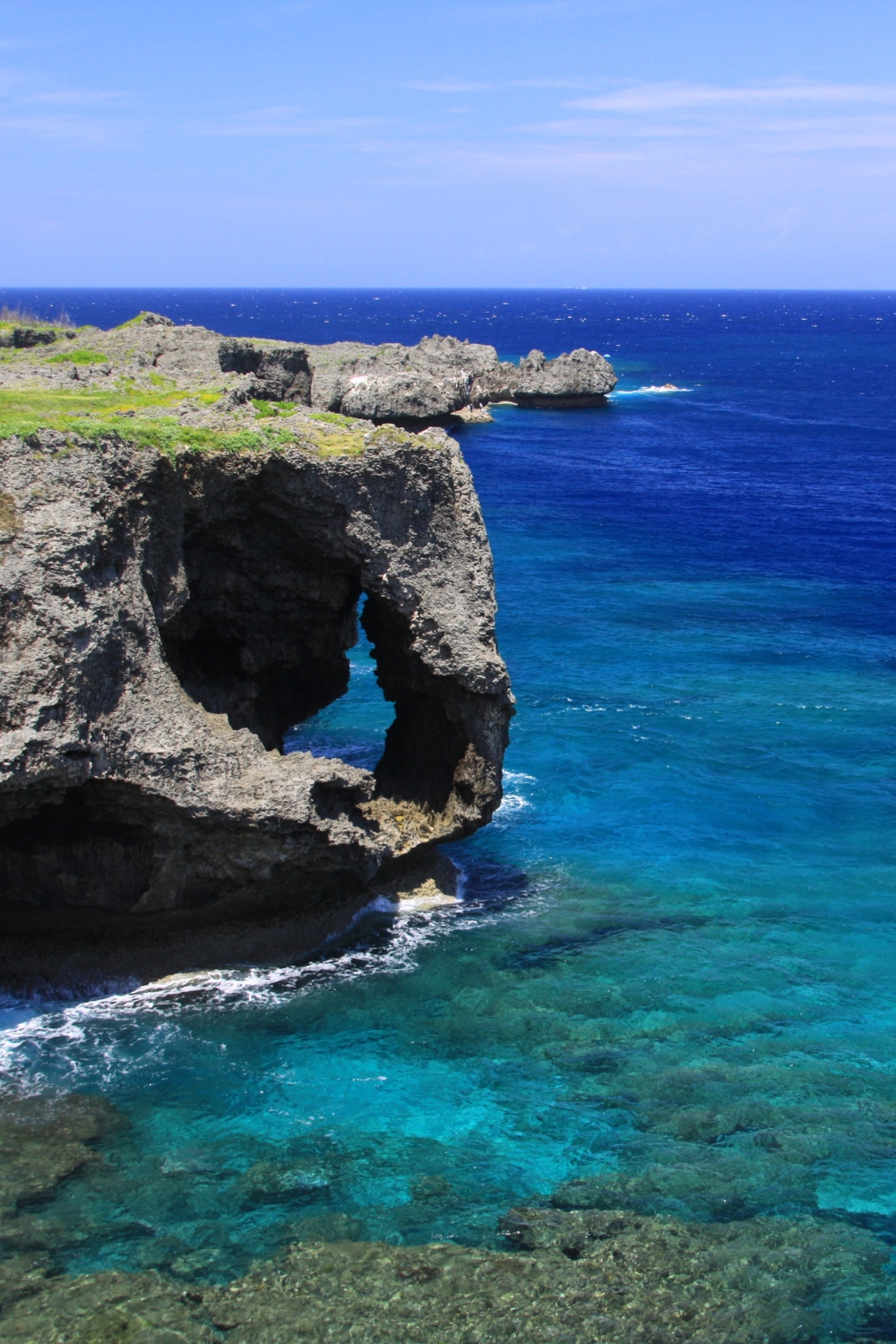
Zamami Island, part of the Kerama Islands National Park, offers world-class diving, pristine beaches, and seasonal whale watching opportunities. This small island provides an intimate island experience with stunning natural beauty.
Crystal Clear Waters and Marine Life
The waters around Zamami Island boast visibility often exceeding 50 meters, making it one of Japan’s premier diving destinations. The healthy coral reefs support diverse marine life, including colorful tropical fish, sea turtles, and seasonal whale visits.
Furuzamami Beach offers excellent snorkeling directly from the shore, while more advanced dive sites around the island provide encounters with larger marine life. The island’s small size means short boat rides to multiple dive sites.
Humpback Whale Watching Season
From January to April, humpback whales migrate through the Kerama Islands, offering incredible whale watching opportunities. These gentle giants can be observed from shore or on boat tours, with mothers and calves often visible in the clear waters.
The island’s elevated viewpoints provide excellent vantage points for spotting whale spouts and breaches. Professional whale watching tours offer closer encounters while maintaining respectful distances from these magnificent creatures.
Best diving season: April to October Whale watching season: January to April Getting there: Ferry from Naha (50-70 minutes) Accommodation: Small guesthouses and minshuku
7. Nakagusuku Castle Ruins – Historical Fortress
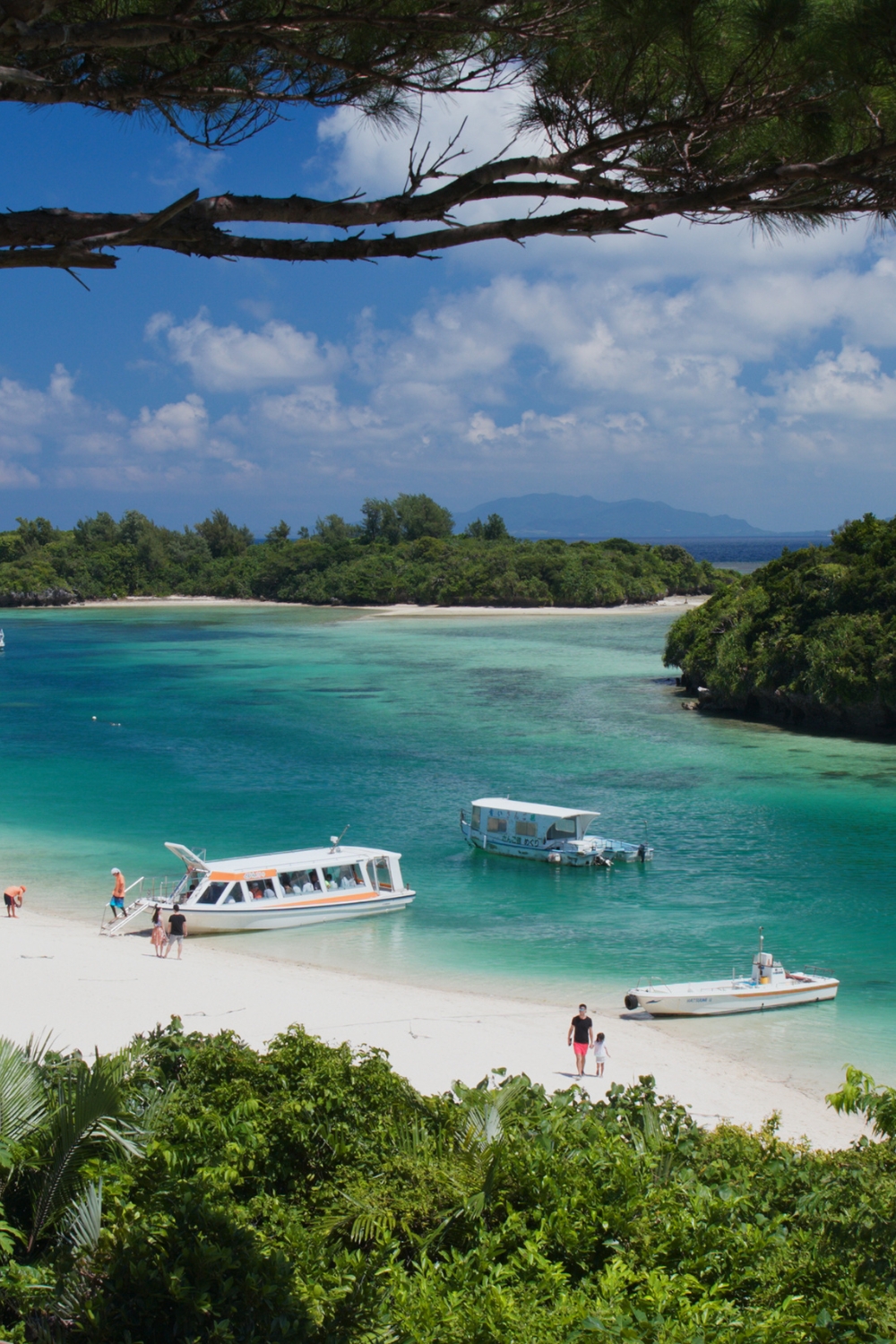
Nakagusuku Castle ruins represent one of Okinawa’s best-preserved castle sites, offering insight into medieval Ryukyu military architecture and stunning panoramic views. This UNESCO World Heritage site showcases the strategic importance of elevated fortifications.
Medieval Military Architecture
Built in the 15th century, Nakagusuku Castle demonstrates the sophisticated military engineering of the Ryukyu Kingdom. The castle’s stone walls, constructed without mortar, have survived centuries of typhoons and earthquakes through expert craftsmanship.
The castle’s layout follows the natural topography, with multiple defensive levels and strategic viewpoints. Walking through the ruins reveals the complexity of medieval Okinawan society and the constant threats that shaped fortress design.
Panoramic Views and Photo Opportunities
The castle’s elevated position offers breathtaking 360-degree views of central Okinawa, including the Pacific Ocean, East China Sea, and the island’s interior. These viewpoints help visitors understand the strategic importance of the castle’s location.
The ruins provide excellent photography opportunities, especially during sunrise and sunset when the ancient stones glow in the golden light. The site’s peaceful atmosphere contrasts with its violent history, creating a contemplative experience.
Built: 15th century UNESCO status: World Heritage Site Best views: 360-degree panoramic views Photography: Excellent sunrise/sunset opportunities
8. Taketomi Island – Traditional Village Preservation

Taketomi Island preserves traditional Okinawan village life like nowhere else in the archipelago. This small island maintains its historic character through carefully preserved architecture, traditional transportation, and cultural practices.
Traditional Architecture and Village Life
The island’s village features traditional Ryukyu houses with red-tiled roofs, stone walls, and shisa statues guarding each entrance. Sand paths wind between houses, creating a peaceful atmosphere that transports visitors back in time.
Local families continue to live in these traditional houses, maintaining the village as a living museum rather than a tourist attraction. Visitors can observe daily life, traditional crafts, and cultural practices that have remained unchanged for generations.
Water Buffalo Cart Tours
The island’s most famous attraction is water buffalo cart tours that transport visitors around the village at a leisurely pace. These gentle animals and their handlers provide commentary about island life, history, and traditions.
The slow pace of the cart tours encourages observation and contemplation, allowing visitors to appreciate details that might be missed during faster transportation. The experience embodies the relaxed pace of traditional island life.
Transportation: Water buffalo carts, bicycles, walking Preservation: Traditional architecture and lifestyle Getting there: Ferry from Ishigaki Island Best for: Cultural immersion, photography, relaxation
9. Cape Manzamo – Dramatic Coastal Scenery
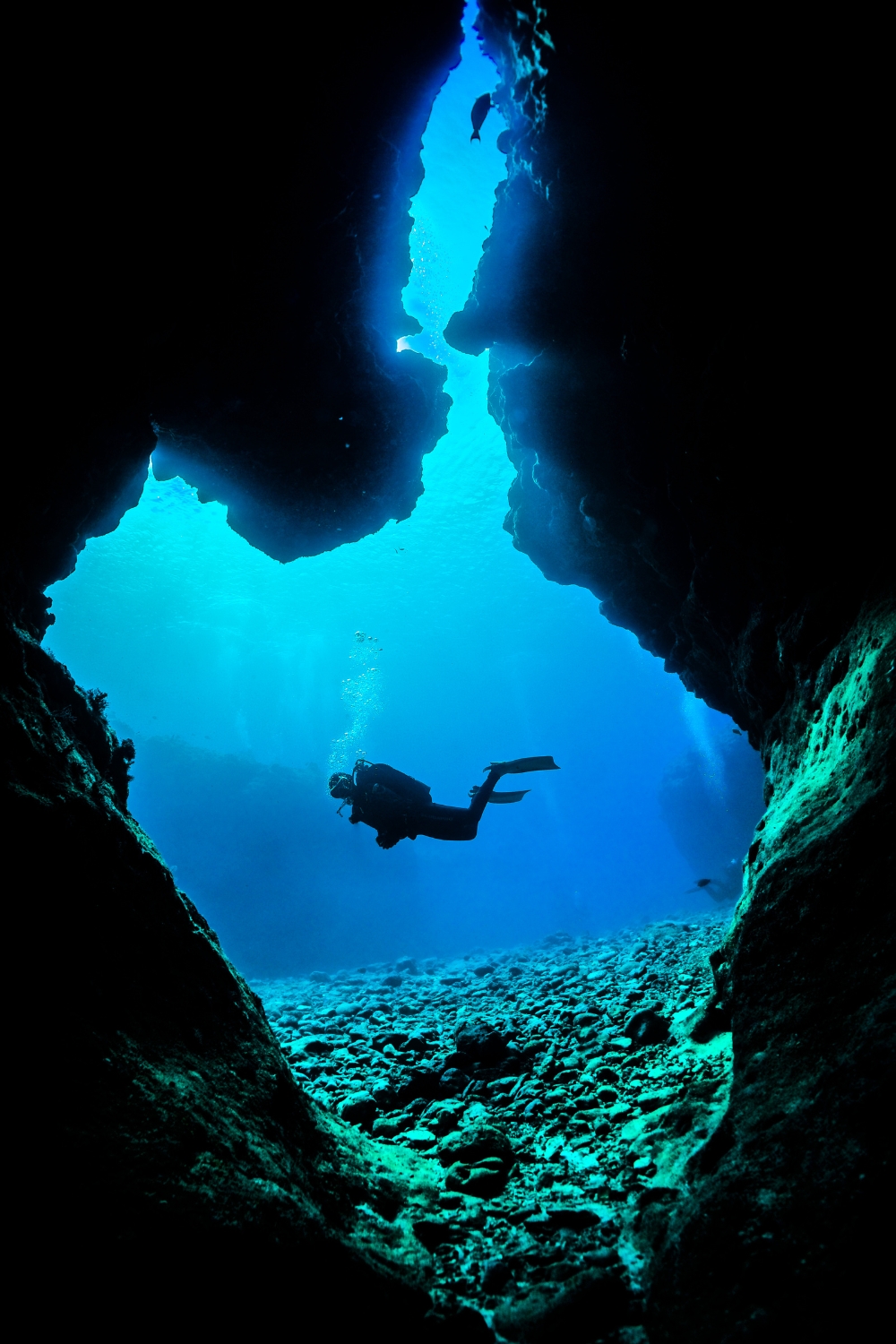
Cape Manzamo offers some of Okinawa’s most spectacular coastal scenery, with dramatic limestone cliffs, natural arches, and panoramic ocean views. This natural wonder showcases the raw beauty of Okinawa’s coastline.
Limestone Formations and Natural Sculptures
The cape’s name means “a field where 10,000 people can sit,” referring to the large grassy area atop the limestone cliffs. Centuries of wind and wave action have carved dramatic formations, including natural arches and sculptural rock formations.
The contrast between the bright blue ocean and white limestone creates striking visual compositions. The area’s geological features tell the story of Okinawa’s formation and the ongoing process of coastal erosion and creation.
Sunset Views and Photography
Cape Manzamo ranks among Okinawa’s most popular sunset viewing locations. The unobstructed western views provide spectacular sunset photography opportunities, especially during winter months when the sun sets over the ocean.
The dramatic cliffs and natural arches create interesting foreground elements for photography. The changing light throughout the day transforms the limestone formations, offering different moods and photographic possibilities.
Best time for photos: Sunset (especially winter months) Geological features: Limestone cliffs, natural arches Activities: Photography, walking, sightseeing Facilities: Parking, souvenir shops, observation deck
10. Naha – Cultural Capital and Gateway
Naha serves as Okinawa’s capital city and cultural heart, blending modern urban amenities with traditional Ryukyu heritage. This vibrant city offers museums, temples, shopping, and the best introduction to Okinawan culture.
Historical Sites and Museums
Naha houses several important museums that preserve and interpret Okinawan history and culture. The Okinawa Prefectural Museum showcases the islands’ natural history, while the Ryukyu Kingdom History Museum focuses on the royal period.
Traditional temples and shrines scattered throughout the city provide quiet spaces for reflection and cultural observation. These religious sites demonstrate the syncretic nature of Okinawan spirituality, combining Buddhist, Shinto, and indigenous beliefs.
Urban Culture and Modern Amenities
As Okinawa’s largest city, Naha offers the full range of urban amenities including shopping centers, restaurants, hotels, and entertainment venues. The city serves as the perfect base for exploring the rest of Okinawa.
The monorail system provides convenient transportation around the city and to the airport. Modern infrastructure combines with traditional culture to create a uniquely Okinawan urban experience.
Key attractions: Museums, temples, shopping, dining Transportation: Monorail system, buses, taxis Best for: Cultural learning, shopping, urban experiences Gateway: Naha Airport serves all of Okinawa
Planning Your Okinawa Adventure
Getting Around the Islands
Okinawa’s main island offers excellent public transportation, including buses and a monorail system in Naha. Rental cars provide the most flexibility for exploring remote beaches and historical sites at your own pace.
For island hopping, regular ferry services connect the main island to smaller islands like Ishigaki, Zamami, and Taketomi. Flight connections are available for longer distances, especially to the Yaeyama Islands.
Best Time to Visit Different Attractions
Dry Season (October-March): Perfect weather for outdoor activities, hiking, and sightseeing. Whale watching season runs January-April. Cooler temperatures make this peak season with higher prices.
Rainy Season (May-June): Fewer crowds and lower prices, but some outdoor activities may be limited. Good for museums and indoor attractions.
Summer (July-September): Hot and humid with typhoon risk, but perfect for beach activities and diving. Peak season for water sports.
Cultural Etiquette and Respect
Okinawa’s unique culture deserves respectful observation and participation. When visiting traditional villages like Taketomi, remember that people live there and maintain quiet, respectful behavior.
Beach and marine environments require protection through responsible tourism practices. Use reef-safe sunscreen, don’t touch coral, and follow diving guidelines to preserve these ecosystems for future generations.
Conclusion
Okinawa offers an incredible diversity of experiences that showcase Japan’s tropical paradise at its finest. From ancient castle ruins that tell stories of the Ryukyu Kingdom to pristine beaches and world-class diving sites, each destination reveals different aspects of this remarkable island chain.
These ten must-visit places represent the best of Okinawa’s natural beauty, cultural heritage, and unique attractions. The islands’ greatest strength lies in their ability to provide both relaxation and adventure, cultural depth and natural wonder, traditional experiences and modern comfort.
Whether you spend a few days or several weeks exploring Okinawa, the islands’ warm hospitality and stunning beauty encourage deeper connection with this unique corner of Japan. The combination of pristine nature, rich culture, and excellent facilities makes Okinawa an ideal destination for travelers seeking something special.
Start planning your Okinawa adventure today, and prepare to discover why these islands have captured the hearts of visitors from around the world. Paradise awaits with its beaches, culture, history, and countless opportunities for unforgettable experiences.
